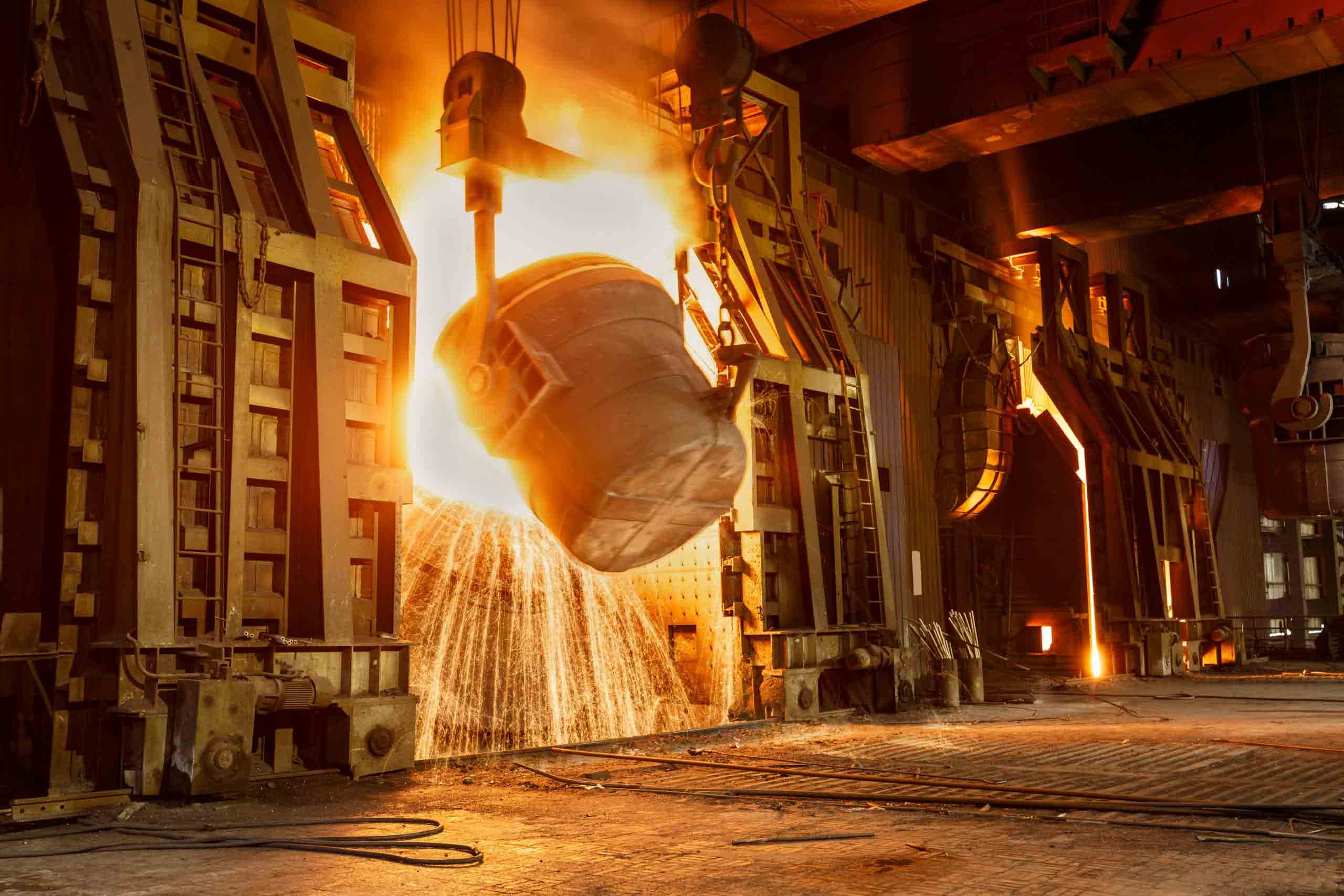HOW STAINLESS STEEL IS MADE IN CHINA
The exact process for a grade of stainless steel will differ in the later stages. How a grade of steel is shaped, worked and finished plays a significant role in determining how it looks and performs.
Before you can create a deliverable steel product, you must first create the molten alloy.
Because of this most steel grades share common starting steps.
Step 1: Melting
Manufacturing stainless steel starts with melting scrap metals and additives in an electric arc furnace (EAF). Using high-power electrodes, the EAF heats the metals over the course of many hours to create a molten, fluid mixture.
As stainless steel is 100% recyclable, many stainless orders contain as much as 60% recycled steel. This helps to not only control costs but reduce environmental impact.
Exact temperatures will vary based on the grade of steel created.
Step 2: Removing Carbon Content
Carbon helps to increase the hardness and strength of iron. However, too much carbon can create problems—such as carbide precipitation during welding.
Before casting molten stainless steel, calibration and reduction of carbon content to the proper level is essential.
There are two ways foundries control carbon content.
The first is through Argon Oxygen Decarburization (AOD). Injecting an argon gas mixture into the molten steel reduces carbon content with minimal loss of other essential elements.
The other method used is Vacuum Oxygen Decarburization (VOD). In this method, molten steel is transferred to another chamber where oxygen is injected into the steel while heat is applied. A vacuum then removes vented gases from the chamber, further reducing carbon content.
Both methods offer precise control of carbon content to ensure a proper mixture and exact characteristics in the final stainless steel product.
Step 3: Tuning
After reducing carbon, a final balancing and homogenization of temperature and chemistry occurs. This ensures that the metal meets requirements for its intended grade and that the steel’s composition is consistent throughout the batch.
Samples are tested and analyzed. Adjustments are then made until the mixture meets the required standard.
STEP 4: FORMING OR CASTING
With the molten steel created, the foundry must now create the primitive shape used to cool and work the steel. The exact shape and dimensions will depend on the final product.
Common shapes include:
Blooms
Billets
Slabs
Rods
Tubes
Forms are then marked with an identifier to track the batch through the various processes to follow.
From here steps will differ depending on the intended grade and final product or function. Slabs become plates, strips and sheets. Blooms and billets become bars and wires.
Depending on the grade or format ordered, a steel might go through some of these steps multiple times to create the desired appearance or characteristics.
The following steps are the most common.
Hot Rolling
Performed at temperatures higher than the recrystallization temperature of the steel, this step helps to set the rough physical dimensions of the steel. Precise temperature control throughout the process keeps the steel soft enough to work without altering the structure.
The process uses repeated passes to adjust the dimensions of the steel slowly. In most cases, this will involve rolling through multiple mills over time to achieve the desired thickness.
Cold Rolling
Often used when precision is required, cold rolling occurs below the recrystallization temperature of the steel. Multiple supported rollers are used to shape the steel. This process creates a more attractive, uniform finish.
However, it can also deform the steel’s structure and often requires heat treatment to recrystallize the steel to its original microstructure.
Annealing
After rolling, most steel undergoes an annealing process. This involves controlled heating and cooling cycles. These cycles help to soften steel and relieve internal stress.
The exact temperatures and times involved will depend on the grade of steel, with both heating and cooling rates impacting the final product.
Descaling or Pickling
As steel is worked through the various steps, it often accumulates scale on the surface.
This accumulation isn’t simply unattractive. It can also impact the stain-resistance, durability and weldability of the steel. Removing this scale is essential to creating the oxide barrier that gives stainless it’s characteristic corrosion and stain resistance.
Descaling or pickling removes this scale using either acid baths (known as acid pickling) or through controlled heating and cooling in an oxygen free environment.
Depending on the final product, the metal might return to rolling or extruding for further processing. This is followed by repeated annealing phases until achieving the desired properties.
Cutting
Once the steel is worked and ready, the batch is cut to fit order requirements.
The most common methods are mechanical methods, such as cutting with guillotine knives, circular knives, high-speed blades or punching with dies.
However, for complex shapes, flame cutting or plasma jet cutting may be used as well.
The best option will depend on both the grade of steel requested and the desired shape of the delivered product.
Finishing
Stainless steel is available in a variety of finishes from matte to mirror. Finishing is one of the last steps involved in the manufacturing process. Common techniques include acid or sand etching, sand blasting, belt grinding, belt buffing and belt polishing.
At this point, the steel is gathered in its final form and readied for shipping to the customer. Rolls and coils are common ways to both store and ship large quantities of stainless for use in other manufacturing processes. However, the final form will depend on the type of steel required and other factors specific to the order.
FINAL THOUGHTS
Understanding the proper stainless steel grades and types for specific uses and environments is an essential part of ensuring long-lasting results and optimizing costs. Whether you’re looking for something strong and corrosion-resistant for marine environments or something stunning and easy to clean for restaurant use, there’s a stainless steel alloy available to suit your needs.
 JIMI STEEL MILL LIMITED
JIMI STEEL MILL LIMITED


